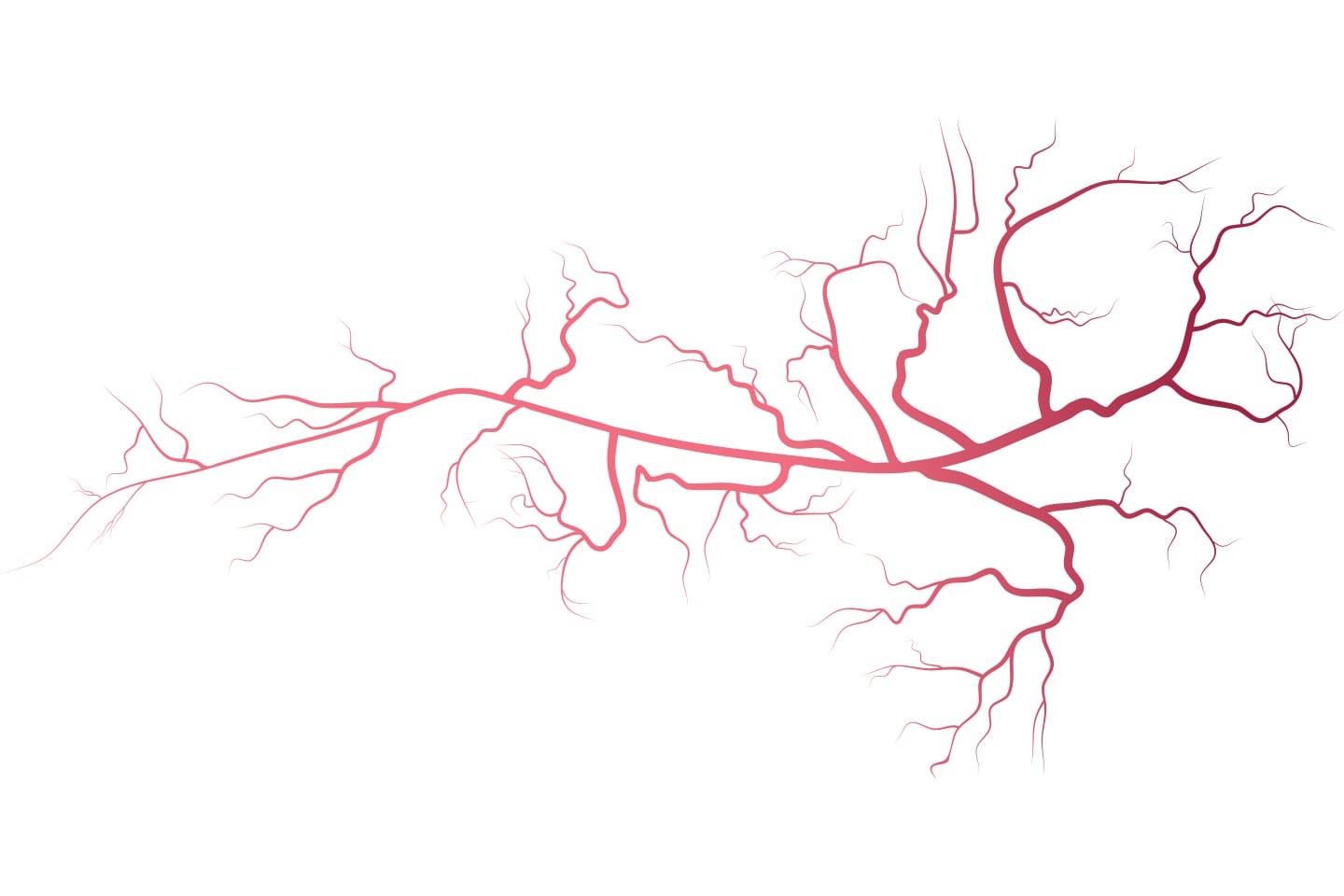Deep vein thrombosis is a type of blood clot that can wreak havoc if left untreated. Knowing your risk level could mean the difference between life and death.
By Emily Kaderly
What Is Deep Vein Thrombosis?



Deep vein thrombosis, or DVT, occurs when a blood clot forms in one of the deep veins in the body. These clots typically form in the lower leg, thigh, or pelvis, but can form in other areas as well. “There are three main reasons that blood clots form,” explains Dr. Chris LeSar, a vascular and endovascular surgeon with the Vascular Institute of Chattanooga. “The first two are stasis (inactivity) of blood – this is why doctors insist people move after surgery – and injury to a blood vessel, which can come from an accident or trauma. The third cause is ‘thick blood,’ which can occur in people who have cancer or clotting abnormalities.”
When it comes to the symptoms of DVT, you can expect the full spectrum, says Dr. Sachin Phade, a vascular surgeon on staff at CHI Memorial. “There are some people who are completely asymptomatic, meaning they don’t even know they have it. Others experience swelling, pain or tenderness, warmth, redness of the affected area, and enlarged surface veins.”
Serious Complications
Although DVT is not life-threatening in and of itself, it does carry potentially serious complications. The most serious complication occurs when a blood clot breaks off and travels through the bloodstream to the lungs. This can create a blockage that eventually leads to what is known as a pulmonary embolism (PE). Symptoms of a PE include sudden shortness of breath, chest pain when breathing or coughing, rapid pulse, dizziness, and coughing up blood. “The location of the DVT dictates how significant the PE is,” says Dr. Phade. “Below the knee, the veins are small, so clots will be smaller and insignificant. If the DVT is higher up in your thigh, those vessels are much larger, which means clots are larger and more likely to break off.” If caught early, a smaller PE can be treated with blood thinners or minor surgical procedures. Larger clots or clots left untreated can lead to serious health complications.
A more long-term complication of DVT is post-thrombotic syndrome (PTS). About one-third of people with DVT will also suffer PTS. “PTS is a consequence of scarring in the vein that formed the clot, and it generally reveals itself two or three years after the initial event,” says Dr. LeSar. In some cases, PTS symptoms can be severe enough to become disabling. “Fortunately, there are techniques that can improve the lives of people who have suffered from DVT and developed post-thrombotic syndrome,” Dr. LeSar explains.
Superficial Veins vs. Deep Veins
Veins are blood vessels that carry blood from the body to the heart. Superficial veins lie just under the skin and move blood more slowly. Deep veins are found in muscles and along bones and carry at least 90% of the blood from the legs toward the heart.


How It’s Diagnosed



Vascular Surgeon, University Surgical Associates and On Staff at CHI Memorial
The symptoms of DVT can mimic many other conditions, so it’s important to see your doctor to confirm any diagnosis. There are several different tests your doctor may perform if he or she suspects DVT.
Duplex Ultrasound
Duplex ultrasound is a non-invasive method to help rule out DVT by revealing another cause of your symptoms. Much like an ultrasound used during pregnancy, duplex ultrasound uses high-frequency sound waves to create a picture of your blood vessels. This traditional ultrasound technology is combined with Doppler technology, which produces a color image of blood flowing through your body. If another cause isn’t identified, your doctor may use the following tests to confirm a DVT diagnosis.
Contrast Venography
More invasive than an ultrasound, a contrast venography involves injecting a contrast solution, or dye, into a vein on the top of your foot. This dye mixes with your blood and flows through your veins. Your doctor can then perform an X-ray to examine the flow of the dye and detect where you may have a blockage.
D-dimer Test
A D-dimer blood test can help determine if your body has developed a clot. D-dimer is a protein that is present when your body is trying to break down a clot. High levels of D-dimer could be an indicator that you have a major clot like DVT.
MRI
A magnetic resonance imaging (MRI) scan is a painless and non-invasive way to create cross-sectional images of the inside of your body, including your blood vessels. These images can reveal clots in your veins.
Traditional Treatment Methods
“Treatment for DVT may vary based on the size and severity of the clot, and early intervention is ideal,” says Dr. Phade. Depending on your case, your doctor may recommend:
Anticoagulants
Also known as blood thinners, anticoagulants are the first line of defense against DVT. They can be injected or taken as pills. Although they don’t break up existing clots, anticoagulants work to prevent any clots you have from growing and keep new ones from forming.
Thrombolytic Therapy
This therapy involves taking drugs called lytics (or “clot busters”), which help to dissolve clots that are blocking arteries or veins. Lytics are typically given through an IV or catheter. This treatment is usually reserved for more severe cases as it carries a higher risk of bleeding than anticoagulants.
Inferior Vena Cava Filter
If medications aren’t working, your doctor may try inserting a filter into your inferior vena cava, the large vein that carries blood back to your heart. This filter is designed to catch a clot traveling through your vein before it can reach your lungs.
Surgery
In rare cases, your doctor may have to perform surgery to remove a clot. In the case of DVT, the surgery is a thrombectomy. If the blockage is in the lungs of a PE patient, the surgery is an embolectomy.



Preventing DVT
DVT is avoidable, and the following preventative measures can help you remain healthy and clot-free:
Live a healthy lifestyle.
This means exercising regularly, eating well, and eliminating vices like smoking. Regular exercise lowers your risk of developing blood clots, since it gets your blood moving, whereas inactivity and obesity increase your chances of developing DVT. Smoking also affects your circulation and blood clotting.
Don’t sit still too long.
Whether you’re traveling across the country or sitting at your desk all day, make sure to get up and move every two to three hours. Walk around or do leg exercises in your seat, such as contracting and relaxing your muscles and raising and lowering your legs. It is especially important to move around as soon as possible after being confined to a bed for surgery, illness, or injury.
Use compression.
Graduated compression stockings are made to compress the ankles and legs. The pressure pushes fluid up the legs and aids in blood flow from the legs to the heart. Some studies have shown this type of compression can help prevent blood clots in those who are post-surgery or trauma and those on flights longer than four hours.
Talk to your doctor.
You may have specific markers that put you at greater risk of developing DVT, such as family history, chronic illness, or injury. Discuss what additional preventative measures you could take to reduce your risk of developing DVT.
It can be scary to think about the damage a small clot can unleash in your body, especially when it can occur without symptoms. But, you can help reduce your chances of developing DVT by taking preventative measures. Knowing your risk can make all the difference. HS

